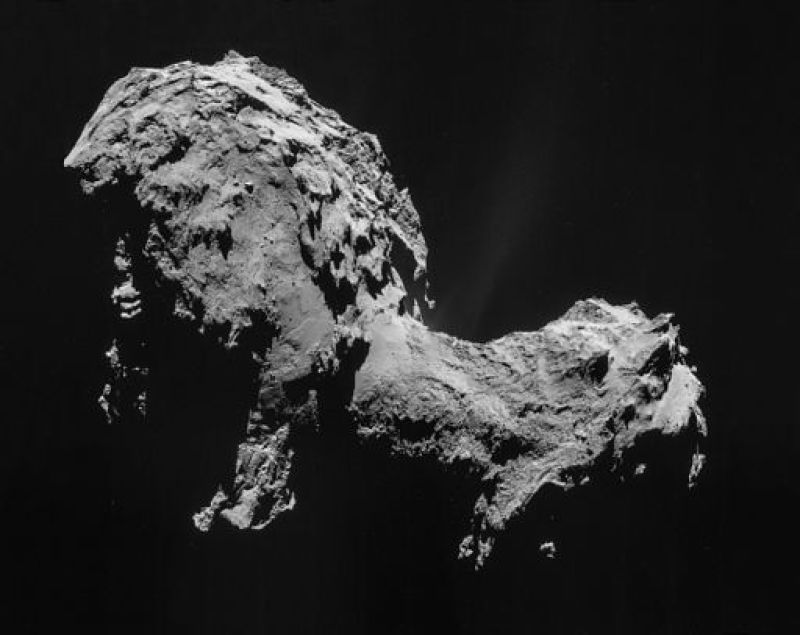
The world remains at awe with the Rosetta spacecraft and the popular comet 67P/Churyumov-Gerasimenko. This time, the OSIRIS team snapped a colored photo of the comet for the first time ever. And like most other comets, it is predominantly grey.
The European Space Agency (ESA) shared the comet's latest images on its blog on Thursday. It also explained why it had been very challenging for their team to capture a colored photo of the famous comet.
"The comet rotated and Rosetta moved during this sequence, the three images are slightly shifted with respect to each other, and are taken from slightly different observing perspectives. Painstaking work is needed to superimpose the images accurately, which is one reason it has taken so long to come up with the first meaningful colour image of 67P/C-G," according to the blog post.
The image may be in color, but it does not look a lot different from its black and white photo. The comet is dark grey in color and has hints of other colors on the surface according to the ESA.
Holger Sierks, Principal Investigator of the Max Planck Institute for Solar System Research (MPS) says that the comet, to the naked eye, "is almost as black as coal."
Last week, the ESA has released a reddish photo of the comet. This, however, does not resemble how the planet looks in reality. One of the first images taken of the 67P comet was also blurry, as the comet is continually rotating.
ESA researcher Sebastian Besse further explains that photos like those released earlier are RGB. The camera used has filters which was made to enhance a specific mineral. He adds that fans of the comet or astrology in general should not rely on the previous images caught by the OSIRIS team, as these are "early products."
According to reports, telescopes on Earth have also seen that the comet is gray, even before Rosetta took a snapshot of the 67P. The surface of the comet is also apparently covered in dark dust. These observations, however, are not enough to make conclusions about the surface of the 67P comet.

















